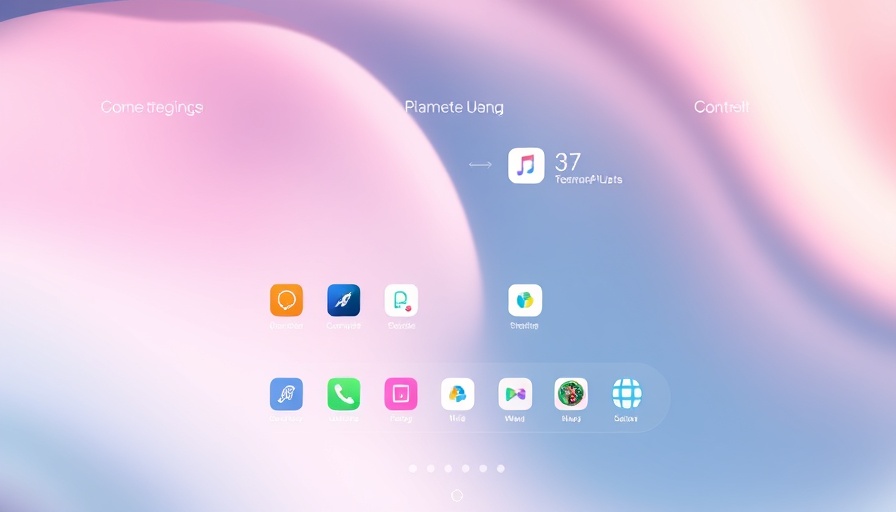
Unpacking Neumorphism: A Fresh Take on UI Design
In the rapidly evolving digital realm, visual aesthetics play a crucial role in user experience. One design trend that's making waves is neumorphism, often referred to as soft UI. This unique design style combines skeuomorphism and flat design, leading to interfaces that feel three-dimensional, yet remain minimalistic. It emphasizes subtle shadows and highlights, creating elements that practically leap off the screen. In this article, we’ll delve into what neumorphism is, why it matters, and how to integrate it into your projects effectively.
What is Neumorphism?
Neumorphism is characterized by its use of shadows to create a sense of depth. This technique allows designers to craft buttons, cards, and other interface components that mimic realistic objects, all while retaining a clean aesthetic. Unlike traditional flat design, which often relies on simple colors and sharp edges, neumorphism brings a tactile quality to digital interfaces. Notably, this design style has gained traction due to its appealing softness and immersive feel.
Why Choose Neumorphism for Your UI Projects?
For professionals, business owners, and marketers, understanding neumorphism's value is essential. This design style enhances user engagement by creating visually stunning interfaces that capture attention effectively. Furthermore, neumorphism can foster a deeper connection between users and products, translating into better user retention, especially in industries where customer experience is paramount.
Designing with Neumorphism: Key Principles
Incorporating neumorphism in your designs begins with a few key principles:
- Light Source Consistency: Always consider where your 'light' is coming from. Uniform shadow directions help maintain visual harmony.
- Subtle Shadow Play: Use soft shadows to create depth, but don't overdo it. The power of neumorphism lies in understated effects.
- Contrasting Colors: Choose color palettes that emphasize the soft effect of neumorphism—light backgrounds work best with slightly darker shadows to create clarity.
Practical Insights for Implementation
When diving into neumorphism, there's a balance to strike. Here are practical steps to help you navigate this design journey:
- Prototyping: Tools like Figma and Adobe XD are perfect for testing neumorphic designs quickly. Get feedback early!
- Accessibility First: Ensure your color contrasts meet accessibility standards. Neumorphism can sometimes hinder visibility.
- Combine with Flat Design: Don't shy away from melding styles. Neumorphism can work alongside flat design to enhance UI experiences.
The Future of Neumorphism and UX Design
Looking ahead, neumorphism is set to evolve. As more companies embrace digital transformation, the demand for intuitive and attractive user experiences grows. Trends in digital marketing and user engagement indicate that the fusion of stylish design and functionality will be paramount. This convergence is where neumorphism shines, appealing not only aesthetically but also enhancing usability.
Call to Action: Embrace Neumorphism in Your Digital Designs
If you're ready to elevate your user interface designs, consider incorporating neumorphism. By blending soft aesthetics with functional elements, you can create interfaces that resonate with users, drive engagement, and improve overall satisfaction. Embrace this innovative design trend and watch your projects come to life with an inviting touch!
 Add Row
Add Row  Add
Add 




Write A Comment